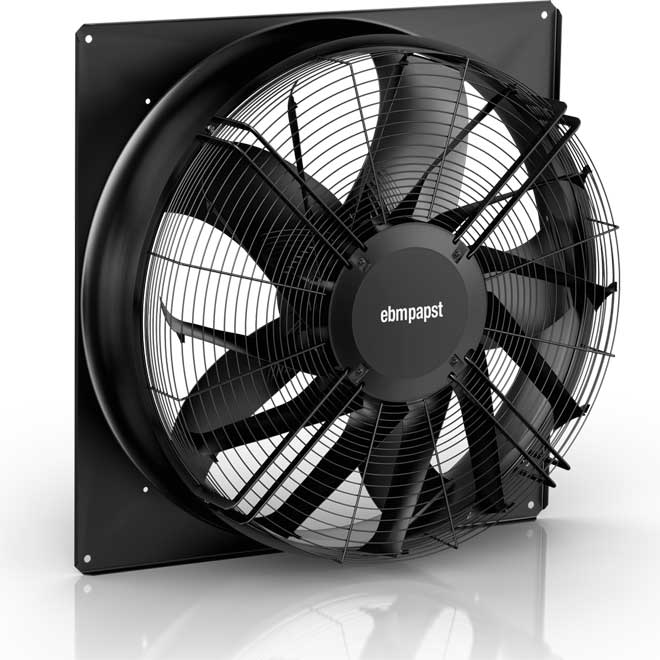How did you become involved with natural refrigerants?
In our parent company, Kratschmayer GmbH, we started looking into the subject years ago. At that time, only a few companies had the use of natural refrigerants on their radar. For us, the goal of pursuing a sustainable approach was central, so we were looking for a supplier of R290 water chillers. But since we couldn’t find a supplier that met our requirements, we started developing the chillers ourselves.

Initially, we produced water chillers exclusively for our own use within the Group. But then competitors also became aware of the machines and wanted to purchase them directly from us. Kratschmayer then decided to found SKADEC GmbH in 2018. This step was necessary because spinning off the business unit allowed us to concentrate fully on the development and sale of water chillers and heat pumps using propane.
Why did you decide on propane?
Propane is a very efficient refrigerant. Combined with its very good thermodynamic properties, relatively low pressure rating, good material compatibility and high volumetric refrigeration capacity, it is possible to create very compact and efficient machines over a wide range of applications. It is also ideal for use in heat pumps. Its properties can best be compared with those of R22, a refrigerant that was very popular with older refrigeration engineers but is now banned. Unlike R22, however, propane has no ODP, so it is not harmful to the ozone layer and has a very low global warming potential of 3.
Have you worked with other natural refrigerants before?
We have had points of contact with all naturally occurring refrigerants except water. Each of the three has advantages and disadvantages. Ammonia is highly efficient, but toxic and corrosive to copper materials. CO2 can be used to create systems with very low temperatures, but the operating pressures are comparatively high. Hydrocarbons such as propane are flammable. In a direct comparison of the points relevant to us, such as application range, handling, and availability, propane provided the best overall package. In addition, one of our refrigeration engineers wrote his thesis on propane – so it was pretty obvious that we would build on that.
But when people think of propane, they immediately think of flammability.
Fear has always trumped reason in this respect. I don’t want to downplay the risks of propane. Of course caution is required here. The fact is that it is a flammable gas. However, you also have to look at the whole thing in perspective. Each of us handles hydrocarbons on a daily basis, for example when refueling. As an example of people’s fear of flammable refrigerants, I had a conversation with a facility manager of a large corporation. He said: “Oh, propane on the roof? The plant fire department won’t stand for that!” The interesting thing here was that the corporation had a storage facility for large quantities of solvents and gases at the location we were discussing.
“The system we were talking about had a fill rate of less than five kilograms. There’s more in a gas bottle for barbecues.”
The system we were talking about had a fill rate of less than five kilograms per circuit, so with two circuits, the total was ten kilograms. There’s more in an 11-kilogram gas bottle for barbecues. We also recommend installing propane systems above a certain fill level outdoors or in specially designed equipment rooms. Propane is very volatile, so there can be no propane buildup if the outdoor installation is done correctly. We are happy to advise our customers, especially on the important points of installation and system planning. So, a lot of factors have to come together for a potential hazard.
How do you reduce the – albeit minimal – risk in your systems?
It goes without saying that our systems comply with the legal standards and specifications. The connections in the system are technically sealed for the long term, so leaks are very unlikely. However, if a leak should occur, our safety concept will kick in and ensure that no dangerous situation can arise. We monitor the system continuously with a gas sensor that is coupled with a two-stage system.
“Our machines need highly efficient, compact fans that are easy to control.”
Propane ignites at a concentration in the air of around 1.7 percent by volume as the lower limit and at around 10.8 percent by volume as the upper limit. When the gas sensor detects ten percent of the lower limit, i.e. of 1.7 percent by volume, the first stage is activated. The machine housing with the refrigerant-carrying parts is then ventilated by a generously dimensioned ATEX fan, meaning that the escaping propane is discharged directly into the environment in a concentration that is not capable of ignition. When the 20 percent threshold is reached, all non-ATEX-certified electrical components are de-energized. All safety-relevant components are of course ATEX-certified and remain in operation.
You use fans from ebm-papst for your systems. Why?

Our machines need highly efficient, compact fans that are easy to control. At SKADEC, we attach great importance to high-quality components, which is why we use only EC fans from ebm-papst for the air heat exchangers. The AxiBlades used are extremely efficient, even at partial load. They are also quiet, which is of course a big plus for heat pumps, especially when used in residential areas. To ensure that the systems can run according to demand, the standard Modbus connection is also a great advantage. We can evaluate all the data from the fans, thereby also providing our customers with digital added value. We were impressed by the efficiency of the EC technology, and also by the quality of the products and excellent interpersonal relationships. It was just a perfect all-round fit.

Leave a comment